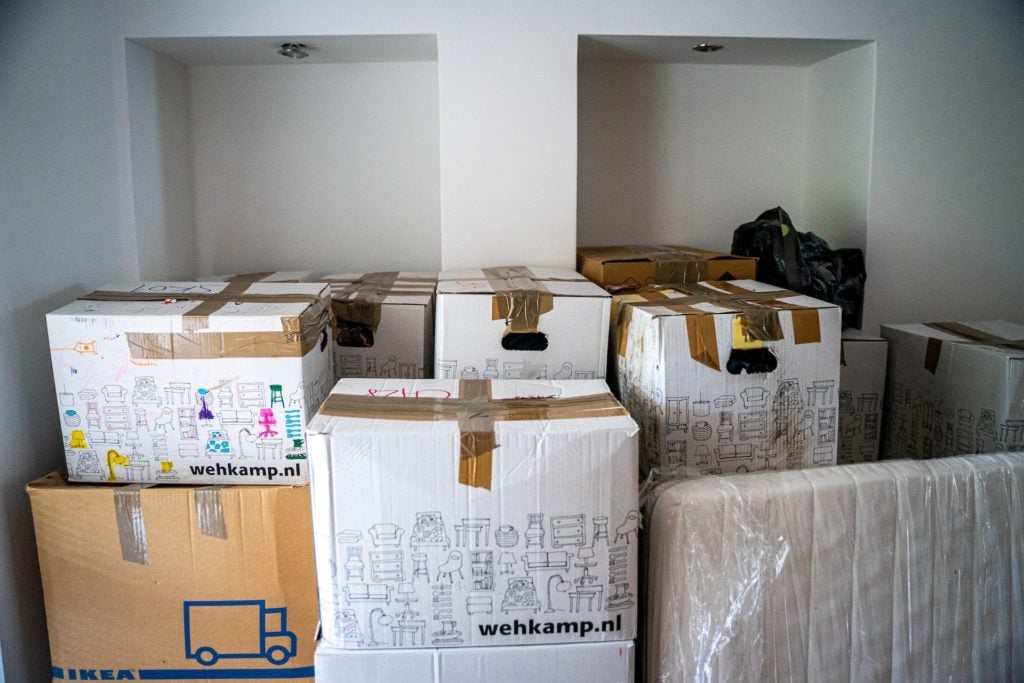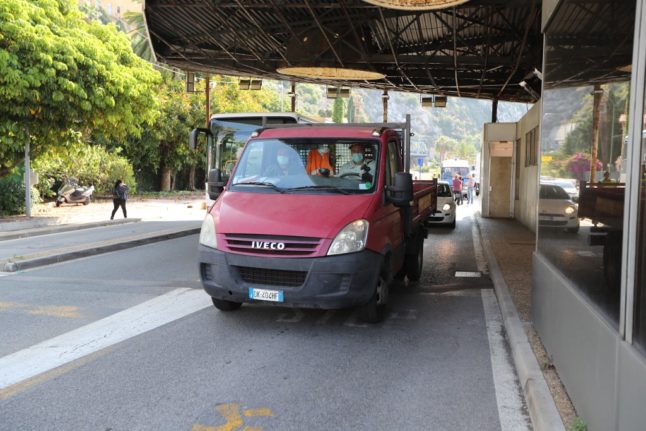There’s been talk on social media this week of a new Brexit rule that affects household furniture removals from the UK into Europe via France.
Couriers who regularly transport goods across the Channel have been reporting that a ‘T1’ form or bond is now required by French customs for all household moves from the UK.
BREXIT UPDATE THIS IS NOW OFFICIAL, ALL HOUSEHOLD MOVES MUST BE CLEARED BY T1.
Afternoon, as of today French Customs have stopped allowing smart clearances. Meaning, every single household removal must travel on a T1 bond and must be discharged in the destination country.— ciaran the euro courier 🇪🇺🇮🇪 (@vanmaneuro) February 24, 2023
Readers have been getting in touch to ask what this means for them – particularly whether this means there are new restrictions on moving goods to Italy or any other EU country.
So what is a T1 form, when will you need one, and why haven’t we heard about this before?
What’s changing
The T1 requirement has been in place for a long time, but it’s only now that France is getting around to enforcing it for the UK post-Brexit, explains Brian Murphy, managing director of the Dublin-based logistics company Global Trade.
A T1 transit declaration form tracks goods that are being transported between countries within the EU customs union from outside the EU.
It provides the holder with proof that they need to make an import declaration and pay customs duties only upon reaching their final destination, Murphy tells The Local, and not in any of the other EU countries they transit through.
This is not a general requirement for all goods brought into the EU. Because the T1 tracks the movement of goods within the EU, it’s not needed if you’re bringing items from directly into one EU country – e.g. from the US to Italy by plane.
Why is this happening now?
Since Brexit, says Murphy, many removal vans coming from the UK had been using a “loophole” to avoid having to file a T1 form by declaring France as their final destination, even when it wasn’t.
Vehicles coming from the UK would simultaneously submit an export declaration to the UK authorities and an import declaration to the French authorities, providing a French address.
France would give the green light that no customs duty was due (as is typically the case with household moves), and the vehicle could enter the country and then proceed on to its final EU destination with no issues.
READ ALSO: Do you have to pay duty if you bring furniture from the UK to France?
Now, France appears to be closing the loophole by saying it will no longer allow this practice.
“France are now saying these are not destined for France, so do not import them into France: use the T1 to transit through France and import them into the country you’re going to,” says Murphy.

How does this affect people moving from the UK to Europe?
If you’re moving from the UK to, say, France or the Netherlands, this likely won’t affect you at all as you can travel to these countries directly (remember that the T1 is only needed when moving goods within the EU customs union).
Those moving from the UK to Italy and driving over via France, though, will now need to open a T1 form.
You can’t simply fill the form out yourself. It isn’t accessible to private individuals as it requires special software, so you’ll need to pay a freight forwarder, customs agent or removal company to do it for you.
READ ALSO: What are the rules on moving household goods to Italy?
If a moving company is handling your items, they should take care of this process for you. If you’re moving your items yourself (see below) you’ll still need to pay someone to open your T1 form.
This means you’ll incur additional costs; some say they’ve been quoted €100, but if you shop around, Murphy says, you might be able to get a better deal.
This fee isn’t just for providing an administrative service, he adds, but because the company that opens the T1 also accepts liability for paying the potential customs debt if the goods go missing (if no customs duty is due, you could reasonably expect to pay less).
You might also experience some delays with your delivery, as a T1 must be “discharged” when the goods arrive in their destination country.
This means that before the delivery can be completed, the courier or moving company first has to go either to a customs office or an approved location known as an “authorised consignee” to report the cargo’s arrival and close out the T1.

Given that customs offices tend to have very limited opening hours, some couriers have raised concerns that this could create a major headache – but Murphy says in reality it shouldn’t result in any significant hold-ups, as there are numerous authorised consignee locations that can be used 24/7.
Companies that have any kind of base in the destination country (such as a warehouse or depot) can apply for these to become authorised premises, and you also can pay to use someone else’s authorised consignee location.
“All along the entry points from Switzerland into Italy, you will have these authorised consignees for your truck to pull in and discharge it and move on, and you’re not driving out of your way,” says Murphy.
What if I want to transport my own goods?
Italy’s customs declaration threshold is €10,000: if you’re bringing in items with a lower value than this, says Murphy, you only need to make an oral declaration to the authorities, and shouldn’t have to fill out a form.
If the value of your goods is above this threshold, you will need a T1 form.
As mentioned above, you can’t fill this form out yourself even if you’re moving your household goods independently.
The company or customs agent that opens your T1 form will provide you with a numerical code known as a Movement Reference Number, or MRN, that you will need in order to close out the form on arrival in Italy.
The customs office or authorised consignee where you want to discharge your T1 must be listed on the form at the time of filing, so you’ll need to set this up in advance.
Overall, while the T1 form requirement will likely add some extra fees, bureaucracy, and possible delays for people relocating from the UK to Italy, it’s far from being a major obstacle to a house move.
The T1 “is not an overly complex process,” says Murphy; “it’s just an extra step.”




 Please whitelist us to continue reading.
Please whitelist us to continue reading.
Member comments